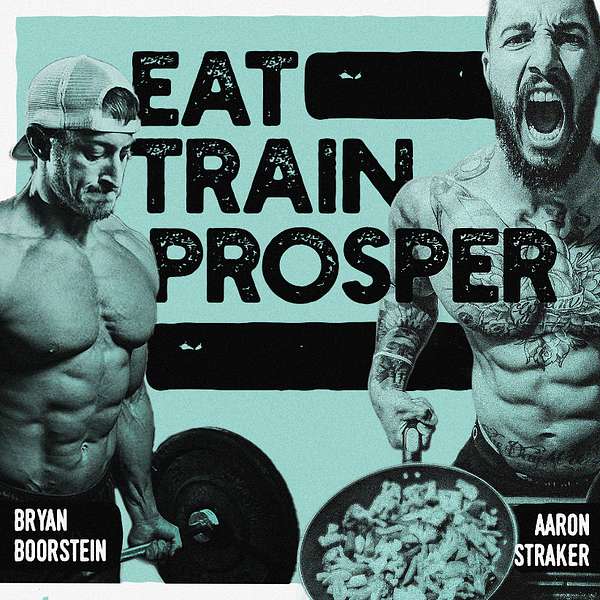
Eat Train Prosper
Eat Train Prosper
Importance of Compound Movements | ETP#5
We often talk about topics with a view from above, zooming in on the advanced trainee. But we all started somewhere, and the way in which you start can impact what you learn, how you interpret the information you’re receiving as feedback from your body, and what processes become your guiding principles as you progress through the training journey.
In this episode we discuss some of the basic training concepts that were part of our journey during the early days. How much did we rely on compound movements? When did we implement isolation work? What lessons can be learned from the approach we utilized? Would we change anything if we could go back in time and do it again?
Topics Explored:
- Learning how to work hard. The big lifts provide the biggest challenge.
- Defining standard training level progressions: Beginner, Intermediate, Advanced.
- Progression happens weekly as beginner, especially on compounds, which allows an athlete to see consistent progress and improve execution through practice of similar movement patterns (and also movements that happen to be relatively functional in the perspective of daily life).
- The Nature of compounds that they work everything. Arms with pulling and pushing movements, quads/hams/glutes across the lower body lifts. When a stimulus is new, these compound movements will absolutely cause growth in the auxiliary/assistance muscle groups. When you’re a beginner, every stimulus is new!
- Progressing 7 basic movement patterns and variations of personal choice for each.
Squat, Deadlift, Bench Press, Row, Dip, Pull-up, Overhead Press. - Diagnostic tools, variable assessment and adding in isolation movements slowly over time.
- Paul Carter's current argument that the complexity of the big lifts is too much for a beginner to learn oftentimes. Focusing more on simpler movements enhances the process of the trainee learning to make a MMC and improve execution quickly.
- Eventually, you reach intermediate status. It’s difficult to quantify this, other than the metric above regarding progression rates.
- When you add isolations, as an intermediate or advanced trainee, they can become the premier “diagnostic tool” that you have for whether hypertrophy is increasing in that area.
Nutrition Coaching with Aaron ⬇️
https://strakernutritionco.com
Instagram: @aaron_straker
Follow Bryan's Gym Programming ⬇️
https://evolvedtrainingsystems.com
Instagram: @bryanboorstein
Eat Train P
Work 1:1 with Aaron ⬇️
https://strakernutritionco.com/nutrition-coaching-apply-now/
Done For You Client Check-In System for Coaches ⬇️
https://strakernutritionco.com/macronutrient-reporting-check-in-template/
Paragon Training Methods Programming ⬇️
https://paragontrainingmethods.com
Follow Bryan's Evolved Training Systems Programming ⬇️
https://evolvedtrainingsystems.com
Find Us on Social Media ⬇️
IG | @Eat.Train.Prosper
IG | @bryanboorstein
IG | @aaron_straker
YT | EAT TRAIN PROSPER PODCAST